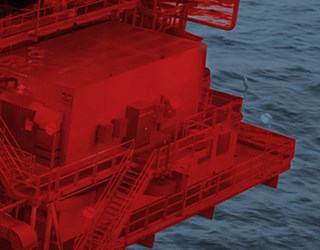NEWS Downhole Insights - Reciprocation and Rotation
Primary cementing operations in today’s complex, extended reach, deep wells requires cement jobs that will provide zonal isolation for life of the well. This level of cementing performance can only be achieved by best practice, quality procedures, and the right casing equipment. The ability to allow for casing movement is essential to produce uniform cementation in the annulus.
Casing movement involves reciprocation and/or rotation. Casing reciprocation entails alternately raising and lowering the casing in the wellbore to help clean out cuttings and debris during final circulation. Today’s drilling technology with top drive rigs now gives the added opportunity to rotate casing and, with the correct cementing heads, can also include simultaneous reciprocation, improving mud removal and enhancing cement circulation in the annulus to promote a good cement bond and long term zonal isolation. Rotation also helps to keep the ECD (Equivalent Circulating Density) low allowing pumping at a higher rate which improves fluid circulation.
When casing rotation is performed, the centralizers on the casing string have to be strong enough to stand up to the rotational torque and have a low enough coefficient of friction to allow the casing to rotate freely inside the centralizers. Here the centralizer is acting as a sleeve bearing.
Conventional welded or hinged bow spring centralizers are unsuitable for this wellbore environment during primary cementing as they lack the strength to stand up to long regimes of reciprocation and rotation. Similarly, solid centralizers, if required can be used in shale wells, but do not provide the same flow by area displacement of a single piece bow string centralizer. Flow by area displacement directly affects fluid regimes, in particular volumes, velocity, density and pressure, all of which have a significant impact on primary cementing operations.
In North Central Oklahoma’s Mississippi Field the non-welded one piece design of the Centek S2, now the tool of choice, has helped reduce torque and drag when getting casing to bottom and has also aided casing rotation. This high performance centralizer successfully withstood the internal rotational torque from the casing.
Three projects in this field demonstrate the benefits of Centek centralizers in getting to TD (Total Depth) and aiding rotation during cementing, producing successful primary cementation from casing shoe to the top of the liner. All three wells were completed in the horizontal, with high DLS at the curve..
In the first project, 37 solid centralizers, from another manufacturer, were used. In this instance the liner got stuck 800ft from the bottom, allied to a high circulating fluid pump pressure in trying to rotate the liner to bottom. Had the liner not got stuck and got to bottom, the solid centralizer with its high ECD would still have caused a high displacement pressure during cementing.
In the second well the operator ran 4 1/2” 11.6# L80 liner casing with 42 Centek S2 centralizers (spaced every other joint) on 5,062ft of pipe. When TD was successfully reached the casing was rotated at 14,000ft lbs at 25rpm. The torque required fell to 11,000ft lbs by the last 20 bbl of fluid displacement. In all the casing was rotated for approximately 445 revolutions during cementing and the liner was successfully cemented.
In the final well the operator ran the recommended 190 S2 centralizers (3 for every 2 joints) on 5,538ft of pipe. After successfully reaching TD, the casing was rotated at 25rpm with 9,800ft lbs torque. Rotation was stopped briefly to drop dart and then continued maintaining 25rpm at 9,500ft lbs torque. Full returns were achieved resulting in the correct placement of cement.. Proof positive that cementation was complete. The operator calculated that around 1,900 revolutions were made during cementing.
In another well in the Rockies in the Piceance Basin (Grand Junction area) the operator chose to run the Centek S2s on 4 1/2” x 6” casing in a deep lateral to about 12,000ft MD (Measured Depth) in the Niobrara formation. The Drilling Engineer commented; “While on bottom in a 12,000ft well we were able to rotate at 60rpm and the bond log results were excellent.”
In Western Colorado an operator ran 167 5 1/2” x 8 1/2” Centek S2 centralizers, floated between casing collars. The S2 also overcame mud weight problems. By having a reduced contact area at the end band to the casing meant that the casing could be rotated easily at 60 rpm when on bottom, saving 2-3 hours RIH (run-in-hole). Stand-off averaged more than 75 per cent.
Casing movement aids the circulation of drilling fluids in the annulus and helps to break up mud clusters, air pockets and prevent channeling. Rotation and reciprocation during cementation is an industry standard and with the S2 rotational torque is low so that rotation throughout the cement job is often the case.
There will always be a reluctance from some operators to fit centralizers due to previous experiences and failures. Often the perception is that they will hinder pipe movement or break during rotation. Some operators don’t use any centralizers and will rotate successfully except the pipe will never leave the bore wall, certainly not in the horizontal, making naturally good cementation that bit harder to achieve. Centralization will provide successful rotation and provide a greater opportunity for a better cement job. The art of success is choosing the best tool for the job which is where Centek excels.

